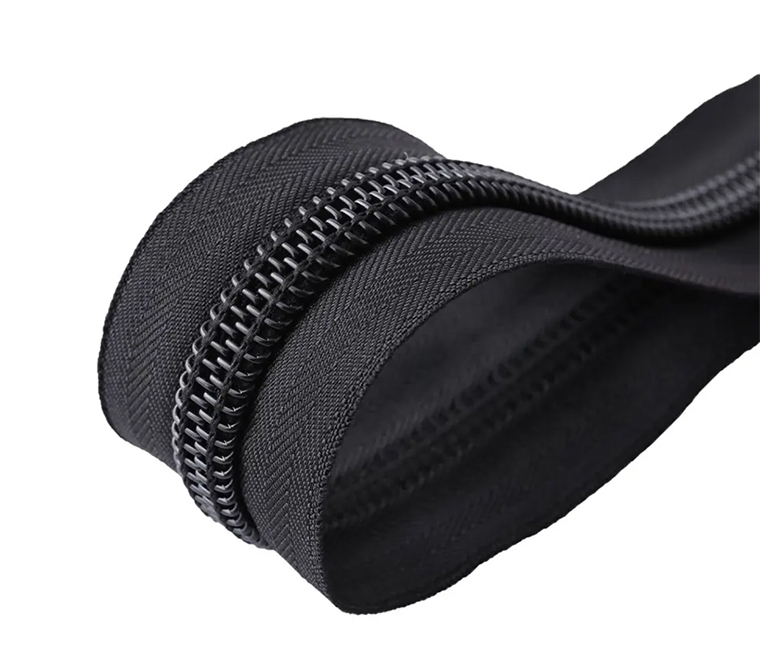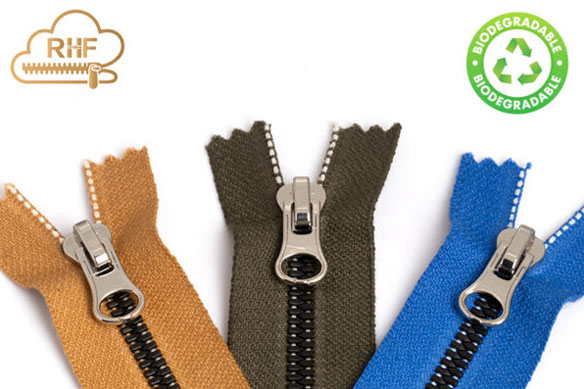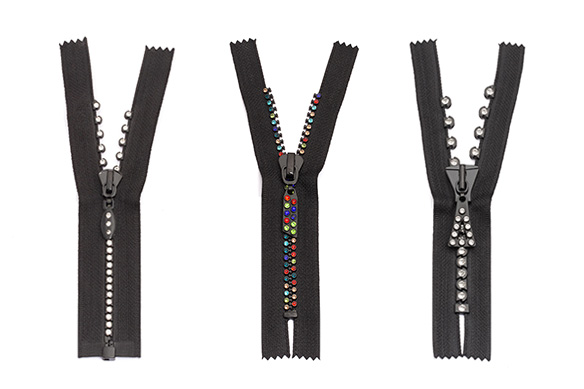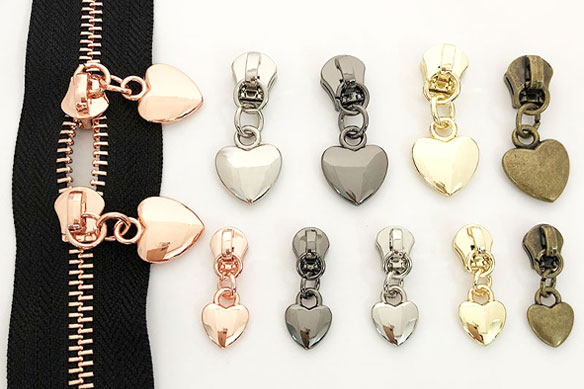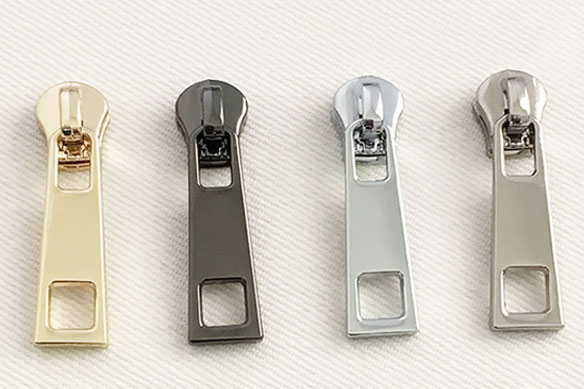Definition
A nylon zipper is a lightweight, flexible, and durable fastener, widely used across industries for its smooth operation and resistance to rust and corrosion. It consists of nylon coil teeth stitched onto fabric tape and a slider for opening and closing. Nylon zippers emerged in the mid-20th century as a practical alternative to metal zippers, becoming a staple in various applications, including fashion and technical gear.
1. Design and Scenario Applications
Nylon zippers are engineered to suit a variety of needs by balancing flexibility, durability, and ease of use. Their versatile design makes them ideal for:
- Fashion: Providing lightweight, aesthetic solutions for clothing.
- Outdoor Gear: Weather-resistant zippers tailored for high-performance scenarios.
- Industrial Use: Reliable zippers for tools, protective equipment, and heavy-duty applications.
2. Advantages and Disadvantages
| Advantages | Disadvantages |
| Lightweight and flexible | Less sturdy than metal zippers in heavy-duty use |
| Rust and corrosion-resistant | Vulnerable to extreme heat |
| Affordable and cost-effective | Limited aesthetic appeal for luxury products |
| Available in various colors and finishes | Requires precise stitching for durability |
| Smooth operation and versatile applications | Not suitable for some high-stress environments |
3. Manufacturing Process
- Material Preparation: Nylon or polyester filament is selected for coil teeth.
- Coil Creation: The filament is shaped into a spiral using heat and pressure.
- Tape Attachment: The coil is stitched securely onto fabric tape.
- Slider Installation: The slider is added to enable functionality.
- Final Assembly: Ends are secured, and optional features like stops or pullers are added.
- Quality Control: Each zipper undergoes rigorous testing for strength, durability, and smoothness.
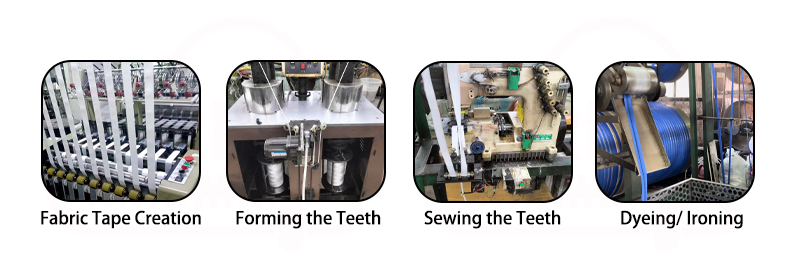


4. Common Sizes
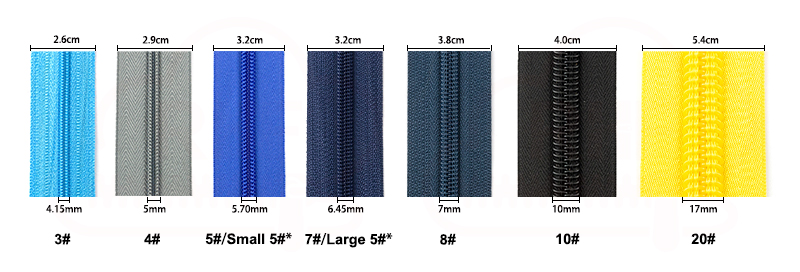


Nylon zippers are categorized based on their width in millimeters, with different sizes suited for specific applications:
- #3 – #4: Ideal for lightweight garments like dresses, shirts, and other delicate apparel.
- #5 – #7: Commonly used for jackets, backpacks, and medium-duty items. Some regions distinguish between “Small 5#” and “Large 5#.”
- #8 – #10: Designed for heavy-duty applications, such as luggage, tents, and outdoor gear.
- #20: Specialty zippers tailored for industrial or high-performance use cases requiring exceptional durability.
Notes:
- In some regions or countries, #5 zippers are called “Small 5#” and #7 zippers are referred to as “Big 5#.”
- The tape size can be customized to be widened or narrowed based on specific requirements.
- The reference size of the zipper tooth width is manually measured, with an error margin of ±5%.
5. Common Styles of Nylon Zippers
Nylon zippers come in various styles to suit different needs:
- Standard Coil Zippers: Smooth operation, perfect for clothing and bags.
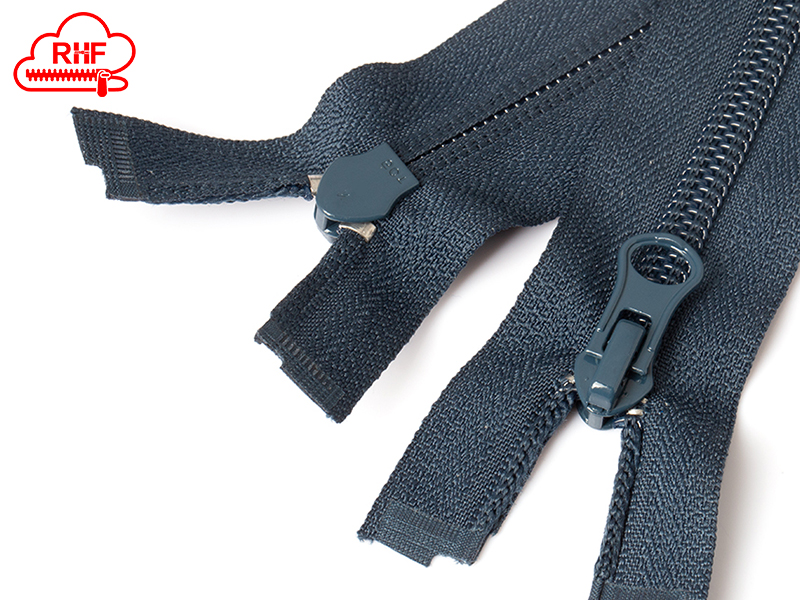
- Invisible Zippers: Hidden within fabric seams, commonly used in dresses, cushions, and pillows.
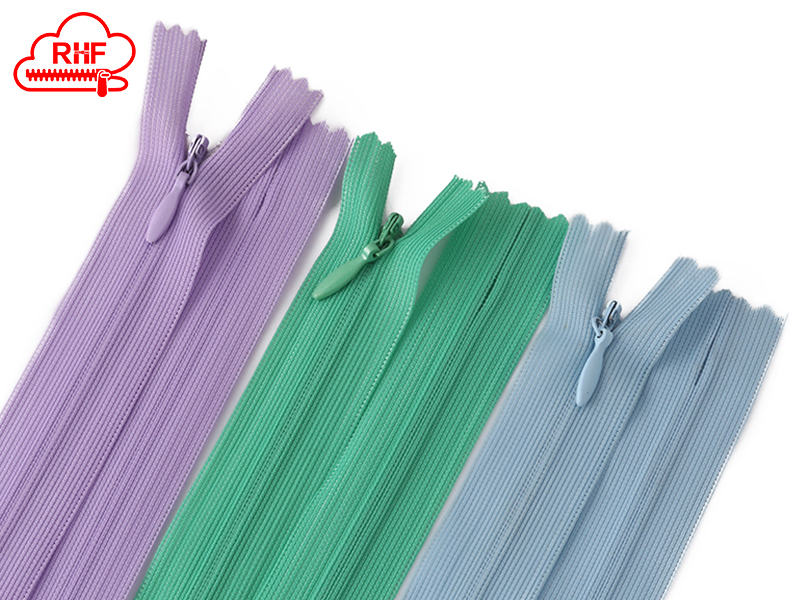
- Waterproof Zippers: Coated with rubber or polyurethane for outdoor gear like raincoats and tents.
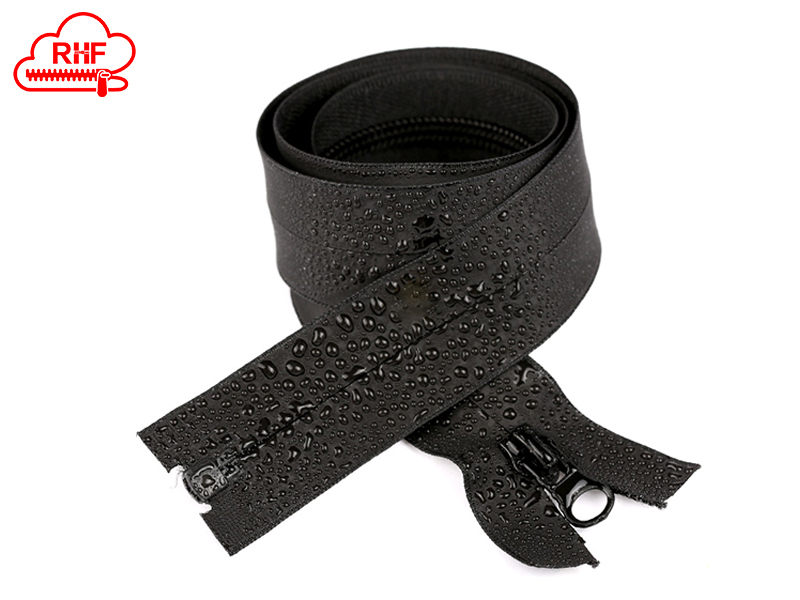
Additional Types by Functionality:
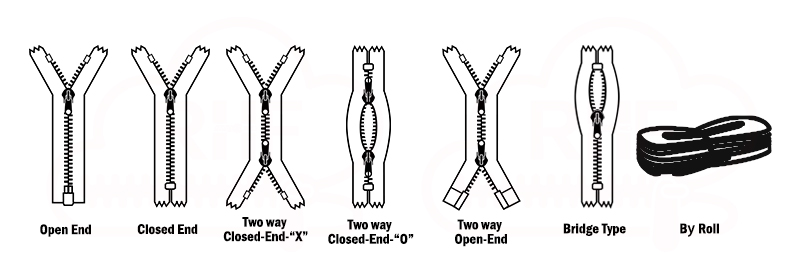


- Open-End Zippers: Separate completely, ideal for jackets.
- Closed-End Zippers: Fixed at the bottom, used in bags and pants.
- Two-Way Closed-End Zippers (“X”): Open from both ends for convenience in bags.
- Two-Way Closed-End Zippers (“O”): Open at the center, suitable for specific designs.
- Two-Way Open-End Zippers: Allow opening from both ends, common in jackets and coats.
- Bridge-Type Zippers: Designed for unique applications requiring flexibility in connection.
- By Roll Zippers: Supplied in rolls for customization in length and application.
6. Applications
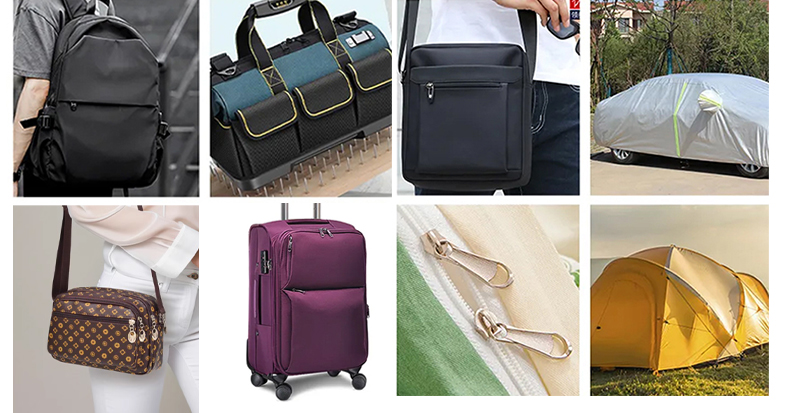


Nylon zippers are widely used across industries due to their versatility:
- Fashion Industry: Lightweight zippers are essential for garments like jackets, dresses, and sportswear.
- Outdoor Equipment: Backpacks, sleeping bags, and waterproof gear rely on durable and weather-resistant zippers.
- Medical Applications: Hygienic and long-lasting zippers for uniforms and accessories.
- Home Textiles: Cushions, bedding, and upholstery.
- Technical and Industrial Uses: Protective gear, toolkits, and other heavy-duty applications.

